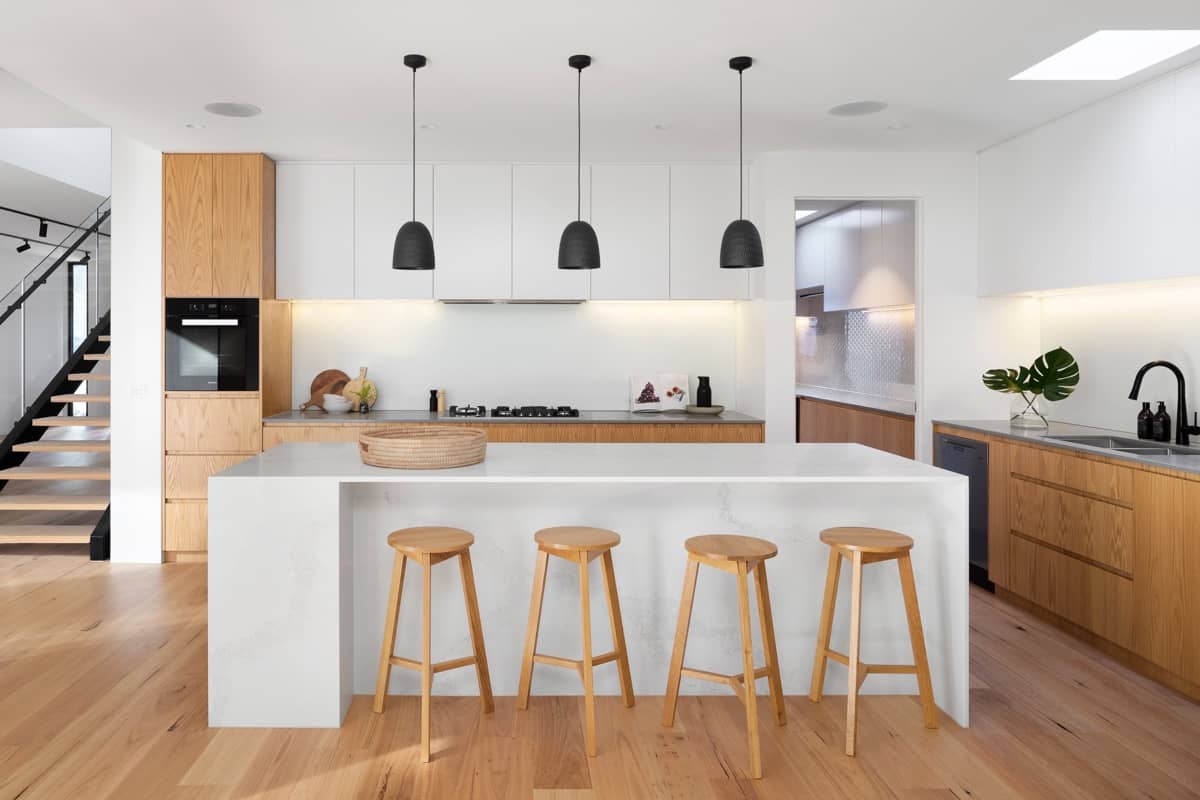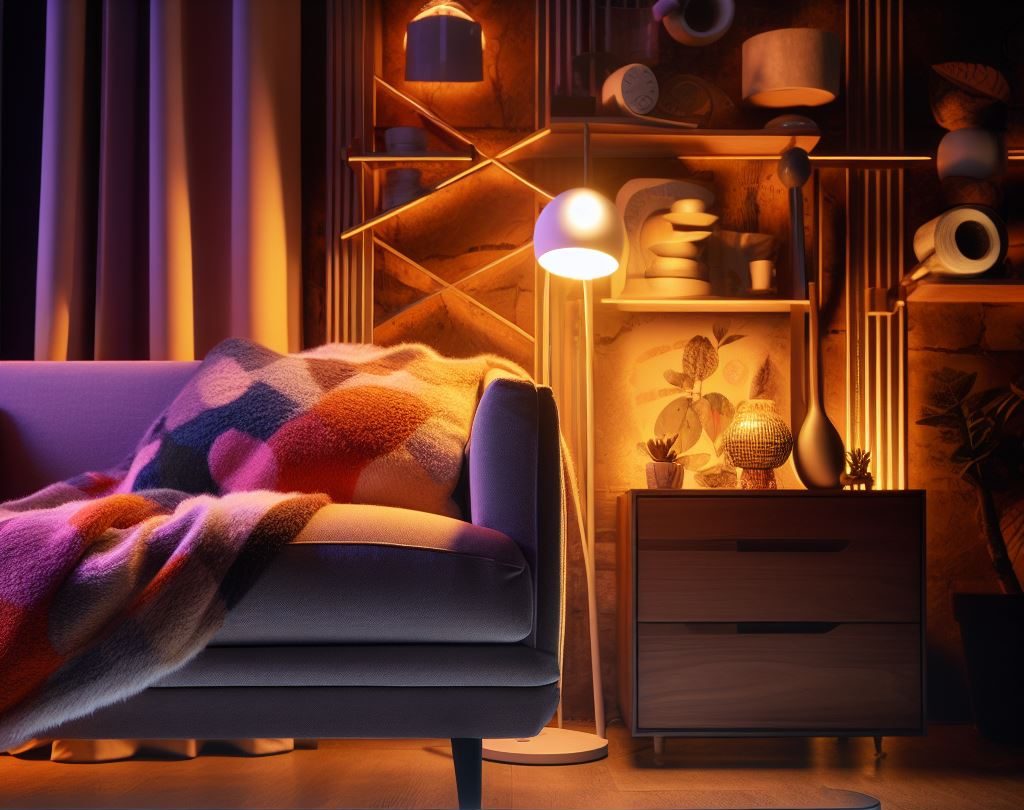A playroom is a space where children’s imagination and creativity come to life. It serves as a sanctuary for little ones to explore, learn, and engage in various activities.
When designing a playroom, one crucial aspect that often gets overlooked is the lighting. Adequate and appropriate lighting plays a significant role in creating an inviting and stimulating environment for children.
Importance of Lighting in a Playroom
The importance of lighting in a playroom cannot be emphasized enough. Proper lighting enhances the overall atmosphere, making it more appealing and conducive to various activities. Whether it’s reading books, building blocks, or engaging in imaginative play, adequate illumination ensures that children can fully immerse themselves without straining their eyes.
Moreover, well-designed lighting can enhance focus and concentration while promoting a sense of comfort and safety within the space. A well-lit playroom not only contributes to better visual acuity but also helps create an engaging atmosphere that encourages exploration and learning.
Advantages of LED Lights over Traditional Lighting Options
In recent years, LED (Light Emitting Diode) lights have gained immense popularity as the go-to option for modern illumination needs. When compared to traditional incandescent or fluorescent lights, LEDs offer several advantages that make them perfect for playrooms. 1.
Energy Efficiency: LED lights are highly energy-efficient compared to their counterparts. They require significantly less electricity to produce the same amount of light output, resulting in lower energy bills for households.
2. Longer Lifespan: LEDs have an impressive lifespan when compared to traditional light bulbs.
On average, LED lights can last up to 50 times longer than incandescent bulbs while maintaining their brightness levels throughout their lifespan. 3.
Durability: LED lights are built to withstand rough handling and vibrations, making them highly suitable for playrooms where children may be more active. They are less prone to breakage, ensuring a safer environment for kids.
4. Safety: Unlike incandescent lights, LEDs emit very little heat, reducing the risk of burns or fire hazards in playrooms.
Furthermore, LED lights do not contain any harmful substances like mercury, making them eco-friendly and safe for both children and the environment. Lighting plays a crucial role in creating an optimal playroom environment for children.
LED lights offer several advantages over traditional lighting options due to their energy efficiency, longer lifespan, durability, and enhanced safety features. By choosing the right lighting solutions for your playroom, you can create an inviting space that fosters creativity and imagination while ensuring the well-being of your little ones.
High-Level Overview of LED Lights
Definition and Working Principle of LEDs
LED, short for Light Emitting Diode, is a semiconductor device that emits light when an electric current passes through it. Unlike traditional incandescent or fluorescent bulbs, which rely on heating filaments or passing an electrical discharge through gas, LEDs operate on the principle of electroluminescence. The heart of an LED is a tiny chip made from a combination of different materials such as gallium, phosphorus, and indium.
When electrons flow through this chip, they release energy in the form of photons, creating visible light. LED lights have revolutionized the lighting industry due to their numerous advantages over conventional lighting technologies.
Not only are they highly efficient in converting electricity into light but also offer exceptional longevity and versatility. By utilizing advanced materials and engineering techniques, LEDs have become more accessible to consumers while proving their superiority over other options.
Benefits of Using LED Lights in Playrooms
LED lights present several significant benefits when it comes to illuminating playrooms. Firstly, they consume considerably less energy compared to traditional incandescent bulbs or fluorescent tubes. This not only reduces electricity costs but also contributes to a greener environment by lowering carbon emissions.
Furthermore, LED lights emit little to no heat during operation due to their efficient conversion process from electrical energy into light energy. This characteristic makes them safe to use around children since there is no risk of accidental burns or fire hazards when kids come into contact with them.
Another advantage lies in their durability and lifespan. While incandescent bulbs may last around 1,000 hours and compact fluorescent lamps (CFLs) last up to 10 times longer than that, LED lights can provide illumination for up to 50,000 hours or more.
In the context of playrooms where lights are frequently used for extended periods, the longevity of LEDs becomes a significant advantage, reducing maintenance and replacement costs. Furthermore, LED lights offer excellent color rendering properties, allowing for more accurate and vibrant illumination.
This feature is particularly important in playrooms as it enhances visual acuity during play and learning activities. Additionally, many LED products provide color temperature options that can be adjusted to create different moods or simulate natural daylight for optimal visibility.
Overall, the use of LED lights in playrooms not only improves energy efficiency but also ensures safety, long-lasting performance, and enhanced visual quality. These advantages make LEDs the ideal lighting choice for creating a comfortable and stimulating environment where children can explore their creativity and engage in various activities without compromising their well-being.
Brightness and Color Temperature Options
When selecting LED lights for a playroom, it is crucial to consider the brightness and color temperature options available. Brightness is measured in lumens, and it determines how much light the LED bulb emits. For a playroom, it is recommended to choose LED lights with sufficient brightness to ensure optimal visibility during playtime activities.
Additionally, color temperature plays a significant role in creating the desired ambiance within the playroom. Color temperature is measured in Kelvin (K) and refers to the warmth or coolness of light.
Lower Kelvin values (2700K-3000K) produce warm white light, which creates a cozy and relaxing atmosphere. On the other hand, higher Kelvin values (4000K-6000K) emit cool white light that provides a bright and energizing environment for active play.
Energy Efficiency and Cost-effectiveness
LED lights are renowned for their exceptional energy efficiency compared to traditional lighting options such as incandescent or fluorescent bulbs. LEDs consume significantly less electrical power while producing an equivalent amount of illumination.
This translates into substantial cost savings on electricity bills over time. Furthermore, LED lights have an extended lifespan compared to traditional bulbs.
They can last up to 25 times longer than incandescent bulbs, reducing replacement costs. The low energy consumption of LEDs also contributes to their durability since they operate at lower temperatures, minimizing the risk of burnout or damage due to high heat emission.
Durability and Lifespan of LED Lights
In a vibrant playroom environment where accidental knocks or bumps may occur frequently, durability becomes an important factor when choosing LED lights. Fortunately, LEDs are highly durable due to their solid-state construction that eliminates fragile components like filaments or glass enclosures found in traditional bulbs. LED lights are resistant to vibrations and impacts, making them ideal for playrooms where children can be quite active.
Additionally, LEDs have a longer lifespan compared to other lighting options. A typical LED bulb can last up to 50,000 hours of usage, meaning it can withstand years of continuous play and still provide reliable illumination.
Safety Features: Low Heat Emission
When it comes to playrooms, safety is paramount. LED lights offer an outstanding safety advantage through their low heat emission. Unlike incandescent bulbs that generate a significant amount of heat due to energy wastage through heat production, LEDs convert most of the electrical energy into light.
The minimal heat emitted by LED lights reduces the risk of burns or accidental contact with hot surfaces. This is especially important in a playroom environment where children may unknowingly touch or come into close proximity with the light fixtures during their activities.
Furthermore, low heat emission from LEDs minimizes the potential hazard of overheating in confined spaces such as play tents or forts that children often create within their playroom. This ensures a safe and comfortable environment for children to enjoy their imaginative adventures without compromising on illumination quality or efficiency.
Category 1: Ceiling Lights
Flush mount LED ceiling lights with dimming capabilities
Flush mount LED ceiling lights are an excellent choice for playrooms as they provide a sleek and modern look while offering versatile lighting options. These lights are designed to be installed directly onto the ceiling, creating a seamless and unobtrusive appearance. One of the standout features of flush mount LED ceiling lights is their dimming capabilities.
With the ability to adjust the brightness levels, you can create the perfect ambiance for various activities in the playroom. Whether it’s a quiet reading time or an energetic play session, these lights can adapt accordingly.
Pendant-style LED ceiling lights with adjustable brightness levels
Pendant-style LED ceiling lights bring both style and functionality to your playroom. These lights hang down from the ceiling, adding a touch of elegance and character to the space.
What sets them apart is their adjustable brightness levels, allowing you to customize the room’s lighting according to your needs and preferences. With pendant-style LED ceiling lights, you have full control over creating a bright and vibrant atmosphere or a softer, more relaxed ambiance for quieter activities like puzzles or board games.
Category 2: Wall-Mounted Lights
LED wall sconces with customizable colors and patterns
LED wall sconces offer an exciting way to introduce creativity into your playroom’s lighting design. These fixtures come in various shapes and designs that can complement any theme or decor style.
What makes them truly special is their ability to display customizable colors and patterns, adding an extra level of excitement for children. Whether it’s projecting stars on the walls or cycling through different vibrant hues, these LED wall sconces allow you to transform your playroom into a magical wonderland.
Motion-activated LED nightlights for added convenience
Safety and convenience go hand in hand when it comes to playrooms, and motion-activated LED nightlights are the perfect solution. These lights are designed to automatically turn on when they detect motion, providing soft illumination during nighttime visits to the playroom.
This feature ensures that children can move around safely without stumbling in the dark. Additionally, motion-activated LED nightlights consume minimal energy, making them an eco-friendly choice for your playroom while providing peace of mind for parents.
Category 3: Floor Lamps
LED floor lamps with adjustable height and brightness settings
Floor lamps are versatile lighting options that can be easily moved around the playroom as needed. LED floor lamps offer a multitude of advantages, including adjustable height and brightness settings.
These features allow you to tailor the lighting precisely to your requirements. Whether you need focused light for a specific activity or diffused ambient lighting for a cozy reading nook, LED floor lamps provide flexibility while adding a touch of style to your playroom decor.
Color-changing RGB floor lamps for a playful ambiance
If you want to create an engaging and dynamic atmosphere in your playroom, color-changing RGB floor lamps are an excellent choice. These lamps come with built-in LEDs that can display a wide spectrum of colors, allowing you to effortlessly switch between various hues or set them to transition automatically. The vibrant and ever-changing colors create a visually stimulating environment that sparks creativity and imagination in children.
Whether it’s playing pretend or holding an impromptu dance party, color-changing RGB floor lamps will undoubtedly elevate the fun factor in your playroom. By carefully selecting from these top picks within each category – ceiling lights, wall-mounted lights, and floor lamps – you can create a well-lit playroom that caters perfectly to both functionality and aesthetics.
Discussing the Importance of Dimming Capabilities in Playroom Lighting
Creating the perfect ambiance in a playroom is crucial to stimulate creativity and provide a comfortable environment for children. One essential feature to consider when choosing LED lights for a playroom is their dimming capabilities.
Dimming allows you to adjust the intensity of light, creating different moods and accommodating various activities. Whether it’s a high-energy play session or a calming reading time, having control over the lighting level can significantly enhance the overall experience.
Dimming capabilities offer versatility by allowing you to customize the lighting according to your child’s preferences and needs. Bright lights may be ideal during active playtime, providing ample visibility and ensuring safety.
However, during quiet moments like storytelling or relaxation, a softer, dimmer light creates a cozy atmosphere that helps soothe children’s minds and encourages them to unwind. Moreover, dimmable LEDs also contribute to energy efficiency and cost savings in the long run.
By reducing the brightness level when full illumination is not required, you can conserve energy without compromising on functionality or style. Additionally, adjusting the light output helps extend the lifespan of LED bulbs, making them an economical choice for playrooms.
Exploring the Benefits of Color-Changing LEDs for Creating a Stimulating Environment
When it comes to stimulating young minds in playrooms, color plays an integral role. Color-changing LEDs offer an exciting way to engage children while creating an immersive environment that sparks their imagination. These innovative lights can cycle through various hues or be set at specific colors using remote controls or smartphone apps.
Color-changing LEDs provide endless possibilities for creative expression within playrooms by setting different tones and themes based on activities or children’s preferences. For instance, during art projects or imaginative play sessions, vibrant colors like reds and yellows can evoke liveliness and enthusiasm.
Alternatively, serene blue tones might be chosen for calming activities such as reading or quiet play. In addition to fostering creativity, color-changing LEDs can also support learning and development.
By introducing different colors and discussing their meanings, parents can engage children in educational conversations. For example, associating green with nature or blue with the sky encourages exploration and expands their understanding of the world around them.
Highlighting the Advantages of Motion-Activated Nightlights for Safety
The safety of children in playrooms is paramount, especially during nighttime when they may wander or need to navigate through dimly lit spaces. Motion-activated nightlights offer a practical solution by automatically illuminating the area whenever motion is detected. These intelligent lights provide a comforting glow that guides children without disturbing their sleep patterns.
Motion-activated nightlights provide peace of mind for parents as they eliminate the need for stumbling through darkened rooms to find light switches. Equipped with sensors, these lights instantly respond to movement, ensuring safe passage across the playroom at any time of day or night.
Moreover, these nightlights are designed to be energy-efficient by only activating when needed. They typically employ LEDs that consume minimal power while offering adequate illumination.
This not only saves on electricity bills but also allows for extended battery life in battery-operated options. Incorporating LED lights with dimming capabilities, color-changing features, and motion-activated functionalities into playroom lighting design offers numerous benefits.
These advanced technologies enhance both aesthetics and functionality while ensuring safety and stimulating children’s senses throughout various activities. By carefully selecting LED lights that cater to these specific aspects, parents can create an inviting and enriching space where imagination flourishes and memories are made.
Additional Considerations When Installing LED Lights in Playrooms:
Proper Placement to Ensure Even Illumination Throughout the Room
When it comes to installing LED lights in a playroom, proper placement is crucial to ensure even illumination throughout the space. Start by identifying the main activity areas within the room, such as reading nooks, play tables, or art stations. These areas should receive focused lighting that enhances visibility and promotes engagement.
Consider installing recessed LED downlights or adjustable track lighting fixtures above these specific zones to direct light precisely where it is needed. To avoid shadows and dark corners, it is essential to distribute light evenly across the entire playroom.
Wall-mounted LED sconces can be strategically positioned on walls facing away from play areas to bounce light off the surfaces and create a soft, diffused glow that fills the room. Additionally, incorporating ambient lighting options like ceiling-mounted LED fixtures with broad dispersion angles can help eliminate any potential dark spots and create a bright and inviting ambiance.
Tips on Creating Different Lighting Zones within the Playroom
Creating different lighting zones within a playroom can enhance its functionality and aesthetics. By separating distinct activities or areas with varying lighting intensities, you can provide versatility for different moods and uses. Consider implementing these tips when creating different lighting zones:
1. Task Lighting Zone: Dedicate specific task-oriented areas such as reading corners or study desks with focused lighting solutions like adjustable LED desk lamps or floor lamps with directional heads. 2. Play Area Zone: To highlight the main playing area, consider using overhead track lights or pendant-style LEDs that provide bright, uniform illumination without causing glare or shadows.
3. Artistic Display Zone: Incorporate accent lighting to showcase your child’s artwork or decorative elements on wall shelves by using LED spotlights or picture lights that draw attention to these special displays. 4. Soft & Relaxation Zone: Introduce a cozy corner by utilizing warm white LED strip lights or floor lamps with dimming features.
These softer lights can create a calming atmosphere for reading or quiet playtime. By carefully planning and incorporating these different lighting zones, you can optimize the playroom’s functionality and cater to specific activities while maintaining an overall cohesive lighting design.
Conclusion
Selecting and installing the best LED lights for your playroom is an essential consideration to create a stimulating, safe, and enjoyable space for your children. By ensuring proper placement of LED fixtures throughout the room, you can achieve even illumination that enhances visibility without causing any discomfort.
Additionally, creating different lighting zones within the playroom allows for versatility in catering to various activities and moods. LED lights offer numerous benefits such as energy efficiency, durability, and safety features that make them ideal for playrooms.
Moreover, with their wide range of color temperatures and dimming capabilities, LED lights allow you to customize the ambiance based on your child’s preferences or specific activities. By implementing these considerations and taking advantage of the versatility offered by LED lighting options available in the market today, you can transform your playroom into a vibrant haven filled with creativity and joy.







